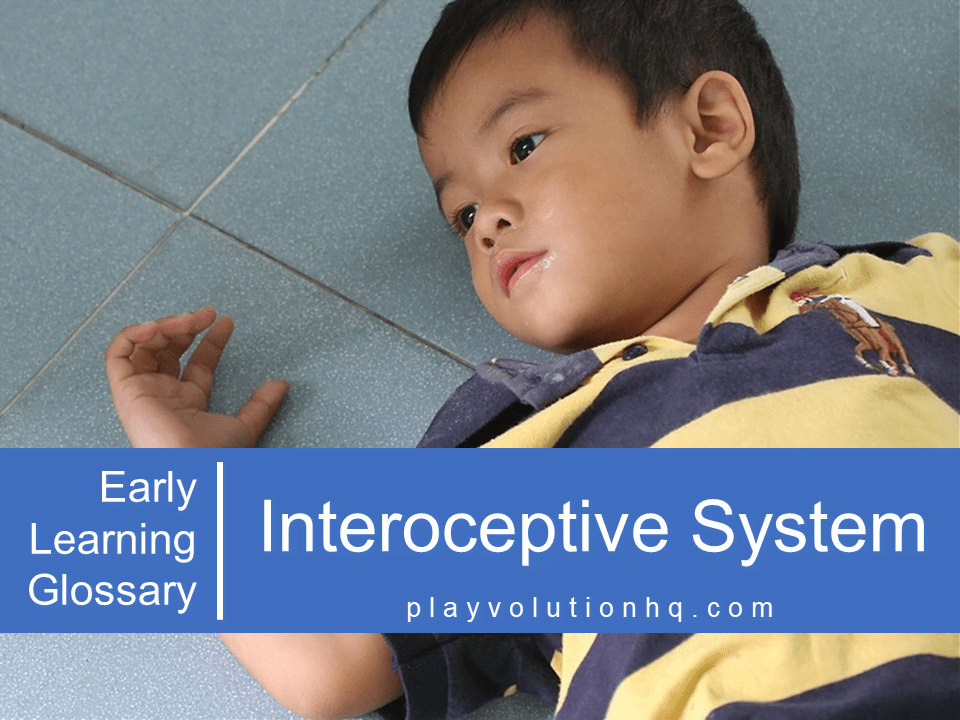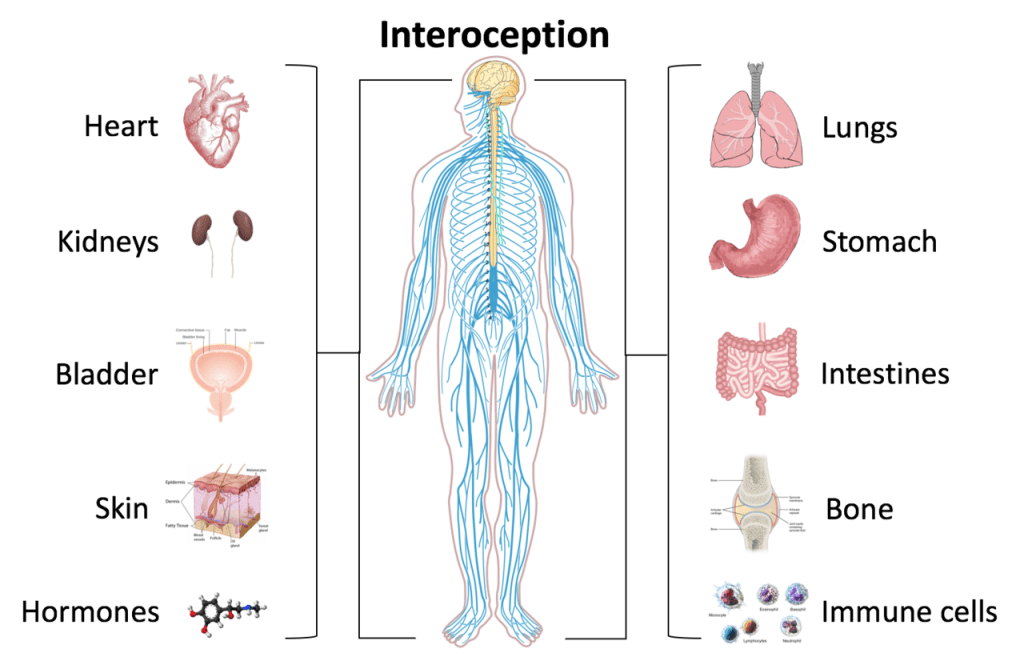
About The Interoceptive System
The interoceptive system senses what’s happening within the body and relays that information to the brain. “The interoceptive system has special nerve receptors which are located throughout our bodies including internal organs, bones, muscles and skin. These receptors send information to the brain. The brain interprets this information and uses it to tell us how we feel. The interoceptive system helps our bodies stay in a state of optimal balance, which is known as homeostasis. People with good interoceptive processing skills are able to respond quickly to the input.”, explains occupationaltherapy.com.au.
The interoceptive system is made up of signals from internal organs like the heart, lungs, and bladder, the immune system, skin, and hormones. We are unconscious of most of the sensory information pulsing through our bodies to our brains.

Interoception And Batman
Here are examples of how a four-year-old Batman with a sick grandma may interact with her interoceptive system through the course of a morning at preschool:
- My tummy has felt funny since Grandma went to the hospital
- My heart is pounding because I’m Batman, and I’ve been chasing Joker
- My tummy feels funny; maybe I have to poop
- My tummy feels funny; maybe I’m hungry
- My tummy feels funny; maybe I’m going to throw up
- I feel hot and can’t catch my breath; maybe I’m sick
- I feel hot and can’t catch my breath; maybe it’s from running while playing Batman
- My throat is dry; being Batman makes you thirsty
- I can’t keep my eyes open; I must be tired from playing Batman
- I feel chilly; maybe I should have put on my jacket–but Batman never wears a jacket
- My left leg aches; I think I hurt it chasing Joker
- My chest feels tight; I wonder how Grandma is
Notice how many things a funny feeling in the tummy can mean. Learning to differentiate between subtly different interoceptive sensations is a big part of the early years. As the interoceptive system develops–and as the individual learns to decipher the signals–it becomes possible to tell the difference between the tummy feeling signaling hunger and the one signaling worry and anxiety over grandma’s health.
Interoception And Self-Regulation
A well-tuned interoceptive system helps children learn to self-regulate. Occupational Therapist Kelly Mahler writes:
As children, we learn through our senses, including interoception. We learn that touching something hot can be painful, that jumping in a puddle can make our skin wet, or that staring at the sun for too long can hurt our eyes. As we grow, we become more knowledgeable about these physical body signals and can learn to use them as clues to our emotions.
When it comes to self-regulation, we may start to look deeper into these body signals and learn what actions help us to promote comfortable feeling body signals and thus regulate our emotions. For example, eating a sandwich may make our growling stomach feel better; a hug from a caregiver may slow our heart rate; putting on a jacket can reduce our shivering muscles. Over time, with a lot of exploration and practice, we begin to learn what activities make our bodies feel good, thus developing the ability to self-regulate.
www.kelly-mahler.com
Explorations And Practice
In the early years, the exploration and practice Mahler writes about happens as children play and engage in normal daily activities, like pretending to be Batman. Most kids don’t need interoceptive lessons or therapeutic intervention. That said, many children are relatively sedentary compared to children of previous generations. They would benefit from more physical activity and opportunities to engage in heavy work, which is any activity that pushes or pulls against the body or involves carrying. Such activity also helps wire the other sensory systems.
Related Posts
Find more information about the 8 sensory systems at these links:
- 8 Sensory Systems That Drive Playful Learning
- Supporting School Readiness With Sensory Integration
- Sensory Play
- Sensory Integration
Contribute content to Playvolution HQ
Brought to you by Explorations Early Learning
Thoughts On This Entry?
I’d love to hear your thoughts on improving this entry and suggestions for additional glossary additions in the comments below. You can also contact me with comments or concerns.
Browse Trainings
Post Author
Jeff Johnson is an early learning trainer, podcaster, and author who founded Explorations Early Learning, Playvolution HQ, and Play Haven.


Leave a Reply